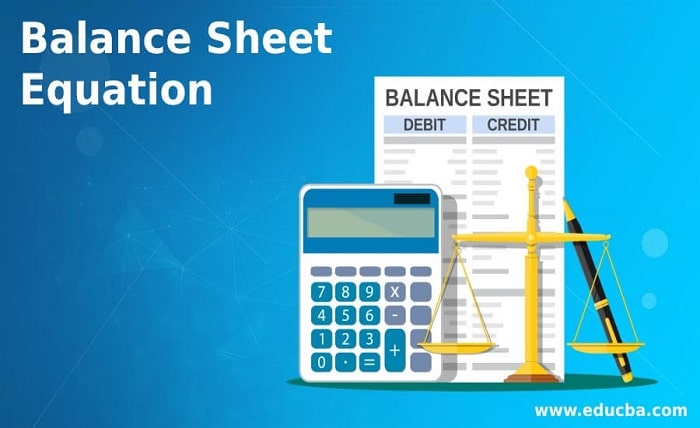When it comes to financial statements, the balance sheet is a key document that provides an overview of a company’s financial position. It showcases the assets, liabilities, and equity of a business at a specific point in time. Understanding the equation that holds true for the balance sheet is crucial in comprehending the relationship between these three elements.
Understanding the Balance Sheet
The balance sheet presents a snapshot of a company’s financial health, revealing what it owns (assets), what it owes (liabilities), and the residual interest of the owners (equity). It is structured in a way that follows the fundamental accounting equation, which states that assets are equal to liabilities plus equity.
Assets
Assets represent the resources owned by a company that have economic value and are expected to generate future benefits. They can be classified into two categories: current assets and non-current assets.
Current Assets
Current assets are those that are expected to be converted into cash or consumed within one year or the operating cycle of a business, whichever is longer. Examples of current assets include cash, accounts receivable, inventory, and short-term investments.
Non-Current Assets
Non-current assets, also known as long-term assets, are resources that have a longer life span and are not expected to be converted into cash within the next year. These assets include property, plant, and equipment, investments in other companies, and intangible assets like patents or trademarks.
Liabilities
Liabilities represent the obligations of a company to pay back debts or fulfill other financial commitments. Similar to assets, liabilities can be categorized as current liabilities and non-current liabilities.
Current Liabilities
Current liabilities are obligations that are expected to be settled within one year or the operating cycle of a business. They typically include accounts payable, short-term loans, accrued expenses, and taxes payable.
Non-Current Liabilities
Non-current liabilities, or long-term liabilities, are obligations that are due beyond the next 12 months. Examples of non-current liabilities include long-term loans, bonds payable, and lease obligations.
Equity
Equity, also referred to as shareholders’ equity or net worth, represents the residual interest in the assets of a company after deducting liabilities. It is the ownership interest of the shareholders and is calculated by subtracting total liabilities from total assets.
The Fundamental Equation
The balance sheet equation is derived from the fundamental accounting equation, which states that assets are equal to liabilities plus equity. It can be represented as:
Assets = Liabilities + Equity
This equation ensures that every transaction recorded in the balance sheet maintains the fundamental principle of accounting, where the value of assets always balances with the combined value of liabilities and equity.
The Balance Sheet Equation
The balance sheet equation provides a clear representation of the financial position of a company at a given point in time. It asserts that a company’s assets are financed by either liabilities or equity. This equation is written as:
Assets = Liabilities + Equity
By maintaining this equilibrium, the balance sheet provides a comprehensive overview of a company’s financial health.
Examples of Balance Sheet Equations
Let’s consider a few examples to illustrate the balance sheet equation:
- Example 1:
- Total Assets: $100,000
- Total Liabilities: $40,000
- Equity: $60,000
In this example, the balance sheet equation holds true: $100,000 = $40,000 + $60,000
- Example 2:
- Total Assets: $500,000
- Total Liabilities: $200,000
- Equity: $300,000
Once again, the balance sheet equation is valid: $500,000 = $200,000 + $300,000
These examples demonstrate that the balance sheet equation remains consistent regardless of the specific values involved.
Analyzing the Balance Sheet Equation
Analyzing the balance sheet equation can provide valuable insights into a company’s financial position. By comparing the relative proportions of assets, liabilities, and equity, analysts can assess the stability and risk associated with the business.
For instance, a high proportion of liabilities compared to assets might indicate a company that relies heavily on debt financing, potentially leading to financial strain. On the other hand, a strong equity position suggests that a company has more resources to weather financial challenges.
Limitations of the Balance Sheet Equation
While the balance sheet equation is a powerful tool for understanding a company’s financial position, it does have certain limitations. It does not capture qualitative factors, such as the reputation of a business or the competence of its management. Additionally, it only provides a snapshot at a specific point in time and does not reflect ongoing changes in a company’s financial situation.
Nevertheless, the balance sheet equation remains a fundamental concept in accounting, serving as the basis for financial reporting and analysis.
Conclusion
The balance sheet equation, represented as Assets = Liabilities + Equity, is a fundamental principle in accounting. It forms the basis for the balance sheet, which provides a snapshot of a company’s financial health by showcasing its assets, liabilities, and equity. By understanding this equation and analyzing the proportions of these elements, one can gain valuable insights into a company’s financial position.

